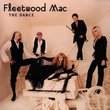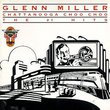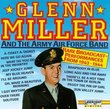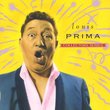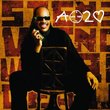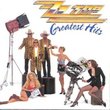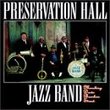| All Artists: Dizzy Gillespie Title: Ken Burns JAZZ Collection: Dizzy Gillespie Members Wishing: 0 Total Copies: 0 Label: Polygram Records Original Release Date: 11/7/2000 Release Date: 11/7/2000 Genres: Jazz, Pop, Latin Music Styles: Latin Jazz, Swing Jazz, Bebop Number of Discs: 1 SwapaCD Credits: 1 UPC: 731454908627 |
Search - Dizzy Gillespie :: Ken Burns JAZZ Collection: Dizzy Gillespie
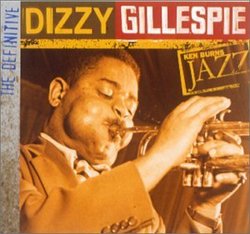 | Dizzy Gillespie Ken Burns JAZZ Collection: Dizzy Gillespie Genres: Jazz, Pop, Latin Music
Although Dizzy Gillespie was one of the great architects of modern jazz and its most famous personality, his trumpet style has rarely been imitated successfully. His high-speed runs, twisting phrases, and upper-register le... more » |
Larger Image |
CD DetailsSynopsis
Amazon.com Although Dizzy Gillespie was one of the great architects of modern jazz and its most famous personality, his trumpet style has rarely been imitated successfully. His high-speed runs, twisting phrases, and upper-register leaps are just too difficult to duplicate. This collection begins by placing Gillespie in the big swing bands in which his career began, his complex arrangements and advanced harmonic imagination gradually heralding the coming of bop. There are superb versions of some of his most famous anthems, like "A Night in Tunisia" and "Salt Peanuts," and meetings with altoist Charlie Parker, co-leader of the modernist revolution. Gillespie successfully translated the bop idiom to a big-band format, and his magnificent but short-lived bands are heard on the surging "Manteca" and "Birk's Works." His creative range is apparent--from the gorgeous "No More Blues," from his early discovery of bossa nova, and from his famous gospel parody, "Swing Low, Sweet Cadillac." While his formats would change, it's the Gillespie trumpet that's central here, an instrument capable of both rocketing invention and muted, insinuating sweetness. --Stuart Broomer Similarly Requested CDs
|
CD ReviewsBest of the Bunch by Jazz' Foremost Entertainer Samuel Chell | Kenosha,, WI United States | 03/18/2001 (5 out of 5 stars) "Thanks to the interest kindled by the Burns series (how curious that the canonical, "party-line" jazz history delivered by Burns and Marsalis has led to their demonization by poorly read, self-appointed critics), I've been collecting these anthologies as preparation for teaching jazz history. Thus far, this Gillespie collection is the most satisfying--more consistent than the Armstrong, more representative than the Ellington, more musically engaging than the Goodman. I'm tempted to say that it's not merely a good introduction to Diz' recorded output but an adequate complete holding for most listeners--the notable omission being the famous "Jazz at Massey Hall" date which included Bird, Bud, Mingus and Max.Unlike Miles, who exercised calculated control over his recording projects and chose "sidemen" with a watchful eye to both their creative and "image" value, Dizzy was laid-back and even careless about his ensembles and recording projects, frequently appearing as a sideman himself on the sessions of lesser musicians. As a result, it's much harder to think of an essential album by Diz than it is by Miles, Duke, Coltrane, or Bill Evans. In fact, Diz could be regarded as a more genuine "entertainer" than either Louis or Miles. The latter two were clearly aware of their "image" (in his bio Miles mentions Orson Welles as one of his main influences) and consciously worked on "acting out" the persona they knew audiences had come to expect. Diz, on the other hand, was simply having fun--a great artist, perhaps the premier trumpet player in the history of jazz, in "spite of" as well as because of his always playful temperament and childlike approach to music and life. His recorded career is literally "all over the place," but Burns has done a creditable job of selecting and consolidating isolated moments that document the man as well as the artist.Diz' star arguably declined after the fifties whereas Miles' continued to ascend. I predict that the passage of time will even things out, enabling us to see the irrepressible John Birks as a supreme "player" of the language we call jazz. Its possibilities--even within the parameters of so-called "bebop"--are infinite, variable, serendipitous--fully available only to the personal consciousness of an inimitable human being whose approach to life might justify a nickname like "Dizzy."" A good introduction to Dizzy Gillespie 03/16/2001 (4 out of 5 stars) "There are far better compilations of Dizzy Gillespie, but unfortunately many of them go in and out of print at an alarming frequency. Only "The Complete RCA Victor Recordings" from six years ago manages to be a great, comprehensive Diz collection that has also stayed in print. This new Ken Burns CD does a great service in collecting some of Diz's greatest recordings and putting them in once place. Once again, we have such essential gems as "I Can't Get Started," "One Bass Hit No. 2," and "Things To Come" widely available in great sound. One wishes that a few tracks like "Ray's Idea" would be included, but perhaps Burns felt it would have shifted too much focus on the 40's. That's too bad because while the later tracks are good, Diz hit an amazing, early peak in the 40's and early 50's that is just monumental (despite some absent gems, the 40's output still takes up half the disc). However, these discs were targeted more towards new-comers, and as introductions, they do a stand-up job.A bit of information on sound quality: Some have complained about the sound, which shouldn't be surprising as a majority of people buying these CD's aren't used to listening to music this old. Coming from 78 rpm discs, they certainly pale next to analogue tape recordings, and do take some getting used to. However, I should point out that the 78 rpm discs are given a fantastic remastering job here. The engineer, Kevin "in-joke for a middle name" Reeves, makes the bold choice of forgoing any noise reduction. As a result, the older, 78 rpm sourced tracks sound rather noisy, but they have a warmth, fullness, and dynamic range that is stunning compared to some of the CEDAR and NoNoise processed discs of recent years (if you can, compare the Charlie Parker collaborations here with the CEDAR processed ones on the new Parker box set: the difference is amazing). Not all the tracks were mastered from original source material, though, but they still sound great because of minimal tinkering done on them." Excellent G. Sawaged | Canada | 11/23/2001 (5 out of 5 stars) "As with a lot of the Ken Burn's series of cds, this was my first real exposure to the music of Dizzy Gillespie. This album covers many different record labels through the years 1940 to 1967, and showcases his many different styles. From small groups to big band, his interest in latin music, as well as his terrific sense of humour, as witnessed in the fun "Swing Low, Sweet Cadillac". The 12 page booklet includes photos of Diz and an interesting essay. Recommended."
|

 Track Listings (16) - Disc #1
Track Listings (16) - Disc #1
